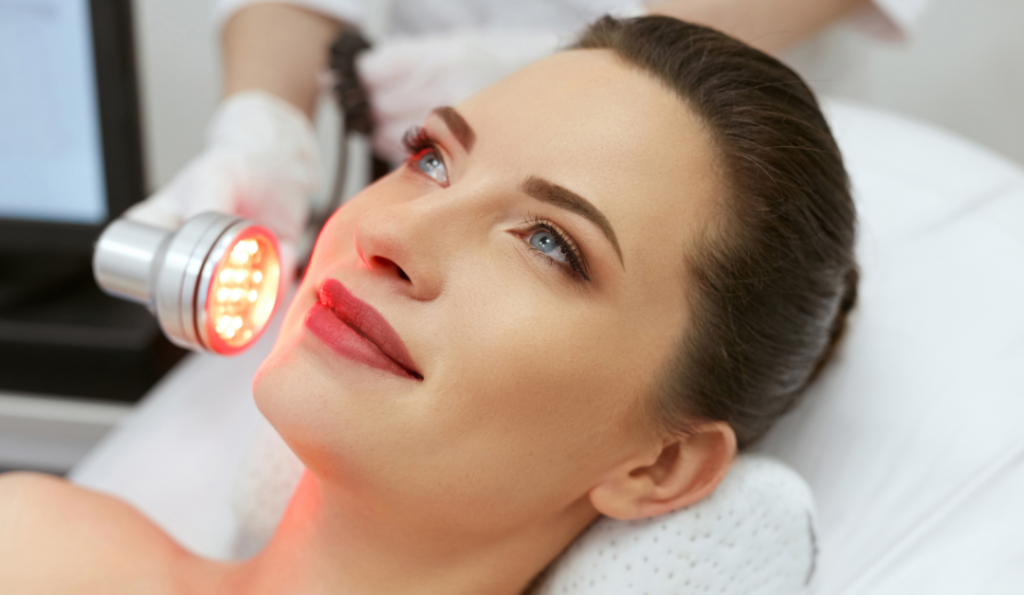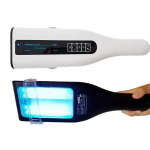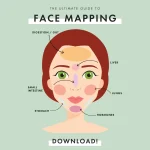Conditions Treated by Narrowband UVB
Narrowband UVB phototherapy is a widely used treatment modality in dermatology for its effectiveness and lower risk profile compared to other ultraviolet light therapies. It predominantly uses UV light with a wavelength of 311-313 nanometers. This specific range effectively targets dermatological conditions due to its ability to penetrate the skin and alter the immune and inflammatory responses underneath. Several skin conditions can be managed with narrowband UVB therapy, offering patients relief and improved quality of life.
Psoriasis
Psoriasis is a chronic, inflammatory skin condition characterized by red, scaly patches typically found on elbows, knees, scalp, and lower back. Narrowband UVB therapy works by slowing down the rapid growth of skin cells, which are responsible for these plaques. It also helps reduce inflammation and suppress overactive immune cells in the skin. This therapy is well-suited for managing plaque psoriasis and heralds a reduction in both frequency of flare-ups and severity. Many patients achieve significant clearance of their psoriatic lesions with consistent treatment sessions.
Eczema (Atopic Dermatitis)
Eczema, or atopic dermatitis, is another condition that benefits from narrowband UVB therapy. Characterized by itchy, inflamed skin, eczema can greatly affect a person’s day-to-day activities and overall well-being. Phototherapy helps in reducing the itchiness and inflammation associated with eczema. It achieves this effect by modulating the immune response in the affected skin areas, ultimately leading to symptom improvement. Patients with moderate to severe eczema who do not respond adequately to topical treatments often experience relief with narrowband UVB phototherapy.
Vitiligo
Vitiligo is a condition resulting in patches of skin losing their pigment, leading to white spots on the skin. Narrowband UVB is considered a standard treatment for vitiligo due to its efficacy in stimulating melanocyte activity—the cells responsible for pigment production. This therapy works best for patients with localized vitiligo, and regular treatment sessions can result in significant repigmentation of the skin over time. Narrowband UVB is particularly effective on body areas such as the face, neck, torso, and limbs.
Other Skin Conditions
Beyond psoriasis, eczema, and vitiligo, narrowband UVB phototherapy is used to treat a variety of other skin conditions, including:
- Cutaneous T-cell lymphoma: This is a rare type of cancer that begins in T-cells and presents on the skin. Narrowband UVB can help in managing early-stage cutaneous T-cell lymphoma by slowing disease progression and reducing skin symptoms.
- Pruritus: Chronic itchiness associated with various systemic conditions like chronic kidney disease or liver disease can be alleviated with narrowband UVB treatment. By modulating the skin’s nerve signals and immune response, phototherapy can significantly reduce the intensity and frequency of pruritus.
- Lichen Planus: Characterized by itchy, flat, purplish lesions, lichen planus can be relieved with narrowband UVB, especially for patients with widespread lesions who do not respond to conventional therapies.
- Polymorphic Light Eruption (PLE): Often triggered by sun exposure, PLE can benefit from controlled exposure to narrowband UVB—preparing the skin to tolerate sunlight better and diminishing severe reactions.
Safety and Efficacy
The safety profile of narrowband UVB is well-documented. It offers a favourable option over broadband UVB therapies due to its reduced potential for causing skin aging and cancer. Proper dosing and monitoring are crucial to minimizing risks such as burns or excessive skin dryness. Furthermore, treatment adherence and protocols adjusted to individual needs play pivotal roles in therapeutic success, with many patients seeing long-lasting benefits when phototherapy is combined with other treatments such as topical corticosteroids or systemic therapies when necessary.
Conclusion
Narrowband UVB phototherapy provides a promising treatment avenue for several chronic dermatological conditions. By targeting specific wavelengths, this therapy effectively manages symptoms, improving skin conditions and enhancing patients’ quality of life. It remains a cornerstone in dermatology treatments, continually advancing with ongoing research and clinical enhancements to optimize its application and outcomes. As understanding of skin biology and technological developments progress, the scope of conditions treatable with narrowband UVB can be expected to expand, emphasizing its integral role in dermatology.

Silvia Malgot is a renowned author and expert in the fields of skincare and beauty, with over a decade of experience researching and writing about effective treatments, holistic approaches, and innovative technologies. Her passion for empowering individuals to feel confident in their own skin has driven her to explore cutting-edge solutions and timeless traditions in skincare.
Silvia has contributed to several leading health and beauty publications, providing insights into trends, product recommendations, and practical advice grounded in science. Her approachable yet detail-oriented style has made her a trusted voice for readers seeking clarity in an overwhelming industry. When she’s not writing, Silvia actively participates in workshops and seminars, sharing her knowledge and inspiring others to prioritize self-care through sustainable, informed practices.


